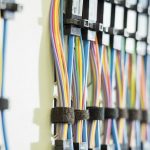The laying of optical fibre cables for the first phase of the project has been completed by more than 85%.
July 13, 2021
Paving the way for the commissioning of the much-hyped Kerala Fibre Optic Network (Kfon) project in the district, more than 90% of the government offices which come under the first phase of the project have been connected to the optical fibre cable network.
As reported in a leading daily — once the Kfon project is operational, government offices and educational institutions in the limits of the project will get high-speed internet and it will help such offices provide various services to the public in a fast and efficient manner.
Watch: Wire & Cable Indian Fortnightly News.
The project will help set up Wi-Fi zones in different areas thereby providing free internet connectivity to the public. The telecom service providers also can use the facility by paying rentals.
According to officials associated with the project, the first phase of the project can be launched in the district in less than two months. “The project is being launched in the eastern parts of the district in the first phase. There had been a lot of hurdles for laying the optical fibre cables. Still, we managed to provide connections to more than 90% of the offices which come under the project in the first phase.”
It is in the limits of Kalamassery, Aluva, Perumbavoor, Muvattupuzha, Piravom, Kothamangalam and Koothattukulam KSEB sub-divisions that the Kfon project will be launched in the first phase. “In the next phase, we will be able to provide Kfon connections to the offices and educational institutions in Kochi and its suburbs,” said an official associated with the project.
It is through KSEB transmission towers and electric poles that the optical fibre cables for Kfon are being drawn. Two types of cables are being laid as part of the project. The first one is an optical ground wire (OPGW) which is used for covering long distances such as KSEB’s transmission towers. The OPGW, which can be carried through underground, will be used wherever the overhead lines can’t be drawn. The other type of cable is known as all-dielectric self-supporting (ADSS) cable which is drawn through electric poles.
Also Read: Openreach and Nokia Test Next Generation of Full Fibre Broadband Technology.
The main hurdles for laying the cables are the permissions required from central government agencies like the National Highways Authority of India (NHAI) and railways. “It will take much time for getting nods from such agencies. Seven government offices in Aluva area couldn’t be connected to the Kfon network as the NHAI hasn’t given permission for laying cables through Marthanda Varma bridge. Permission from the Centre is required for drawing cables through naval armament depot area near Aluva,” sources said. According to the officials, the work on the first phase was comparatively easy. “In the second phase, drawing cables through the KSEB poles in the busy city roads would be a time-consuming process,” the officials said.





